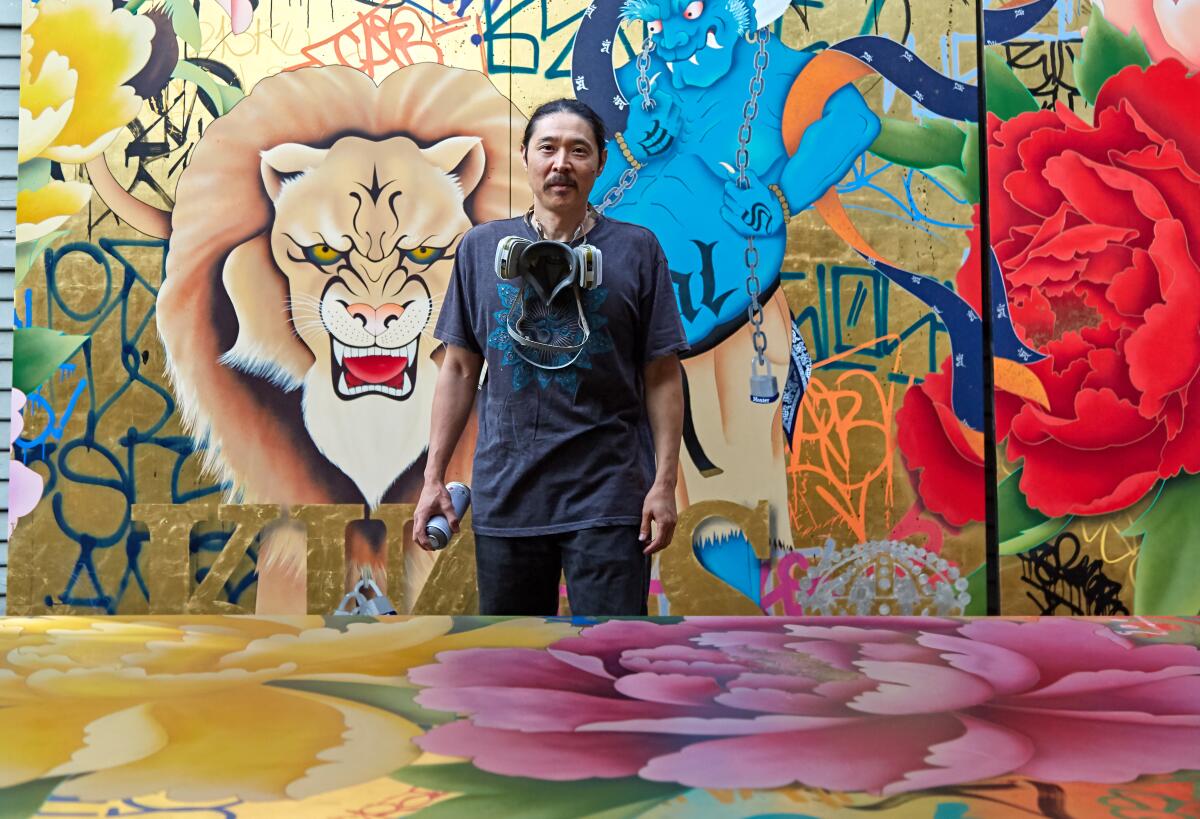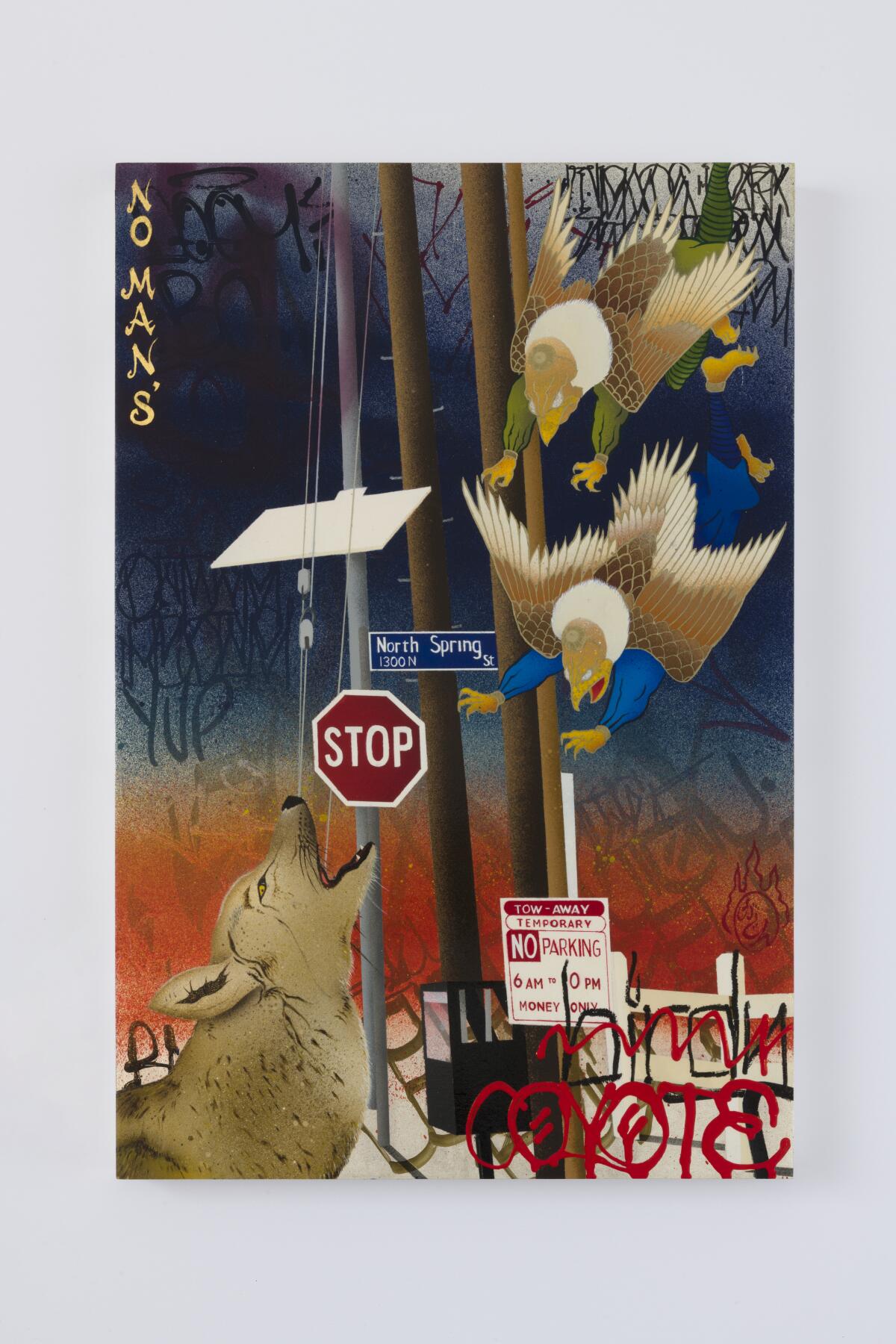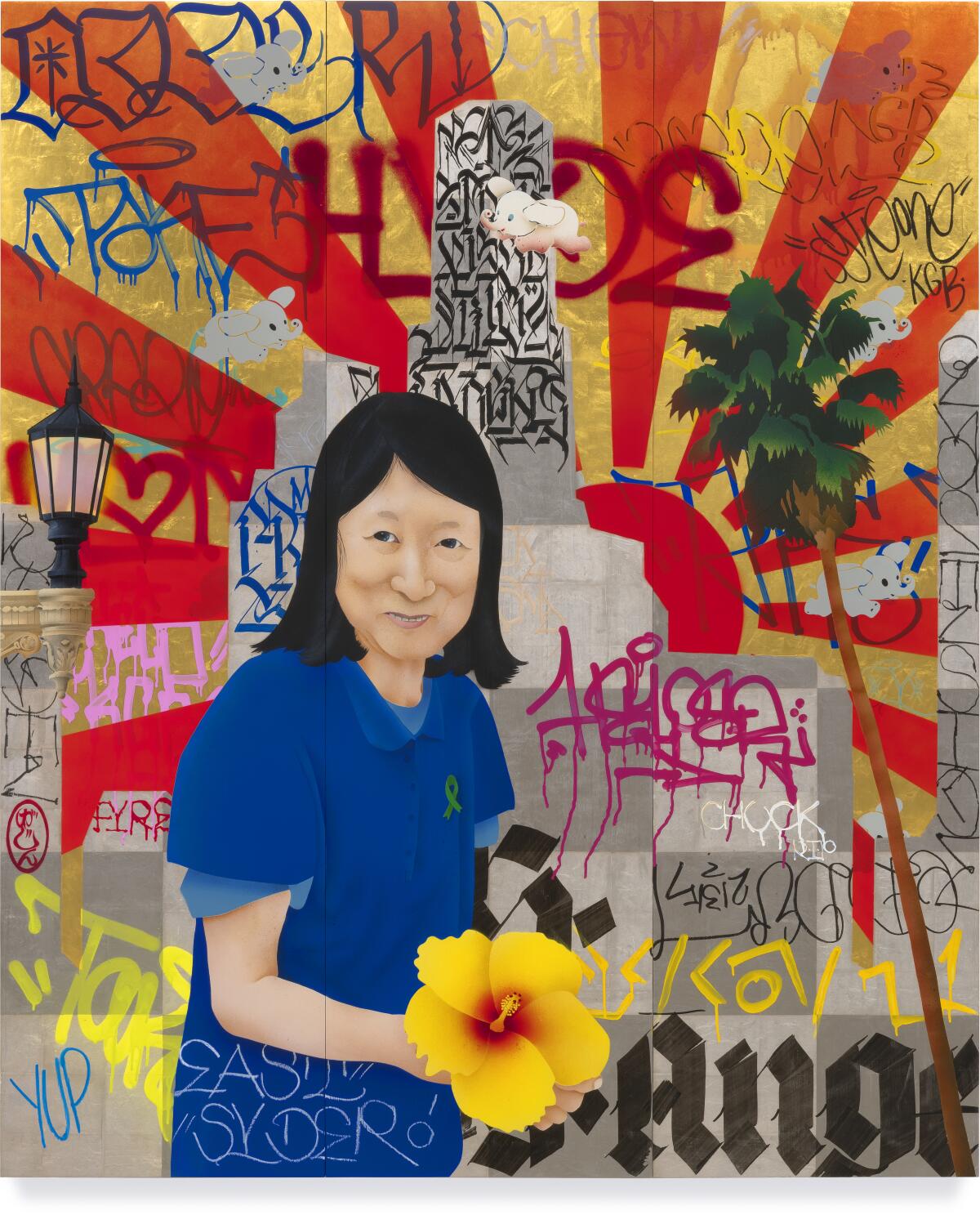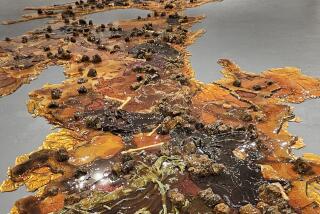In a new gallery show, artist Gajin Fujita turns inward to create love letters to L.A.

As a kid on summer vacation, Gajin Fujita wanted to run outside as soon as he could. Instead, his mom wanted Fujita and his two brothers to create pictorial journals and write text in Japanese to accompany their doodles. An 8-year-old Fujita drew stick figures that showed him and his friends playing football; he sketched the Japanese eggplants, peas and cucumbers growing in the family’s Boyle Heights backyard.
Fujita found himself revisiting this practice for his new show at L.A. Louver, albeit in a way he wasn’t expecting. The exhibition, called “True Colors,” showcases paintings and drawings Fujita created from 2020 to the present day, with a clear move toward a more intimate form of artmaking — an intentional act during an era that has shaken our relationship to time. “In hindsight, I super appreciate that my mom did that,” said Fujita. “I see the works in this room as being a pictorial diary of the pandemic in isolation.”
Fujita’s voice echoes in the large gallery space as he walks past pieces featuring dragons, graffiti tags, city landscapes and — a first — portraits. His work over the years has consistently been a love letter to Los Angeles. Nods to L.A.’s urban sprawl are paired with vivid graffiti lettering and spray paint, punctuated with blazes of gold leaf and carefully rendered figures inspired by Japanese Ukiyo-e art.
Ten years ago, billboards across Southern California proclaimed that the baseball team then known as the Anaheim Angels had become the Los Angeles Angels.
Fujita’s parents arrived in Los Angeles in the 1970s; his dad was a painter, and his mom worked as a conservator. He became part of the graffiti crews K2S (Kill to Succeed) and KGB (Kids Gone Bad) in the 1980s, cutting his teeth creating art in the streets. He attended Fairfax High School, bused there from Boyle Heights and graduating in 1990. After graduating from Otis, Fujita attended University of Nevada, Las Vegas, honing his craft under the mentorship of Dave Hickey.
L.A. Louver director Peter Goulds says Fuijta’s style has evolved from “a very strong graphic tone” in his earlier works to more “subtle tones and tonalities,” particularly as spray paint, and its accompanying tools, became more sophisticated as a medium. Goulds first saw Fujita’s work through his position as a trustee with Otis; he says the work in “True Colors’’ showcases the “observations in the city that were very upsetting and disturbing to him.”

In one piece, called “#WTF,” a geisha takes a selfie as a palm tree burns in the background. It’s a reference to the boiling point of social unrest during the pandemic, after George Floyd’s murder — and the strange ways in which anything can be a background for a selfie these days. In “Omnipotent L.A. Sky,” the city clashes with otherworldly forces as a giant dragon emerges from a portal, baring its fangs.
“I felt like, especially in our country, everyone feels so entitled to everything. But yet when you hear resources becoming scarce, people are out there buying the hell out of toilet paper,” said Fujita. “And it was just mayhem that was about to erupt, I felt. I just know that there are greater forces than us. We think we’re so almighty. And I just wanted to say no, we’re just little minuscule, like, specks of dust within this macrocosm of the universe.”
At the summit of a steep incline in Elysian Heights, past an unassuming gate, down a slightly dangerous walkway, you’ll find a concrete landing that serves as the plein-air home studio of Gajin Fujita.
Yet Fujita’s sense of humor and punk sensibilities run alongside the show’s more vulnerable themes. ”Allure” features a half-nude geisha with the string of a kite wrapped around her toe, and a Yakko-san — a “servant to the samurai,” as the monograph explains — floating above. Fujita says it’s about deception, and how gullible we are as a society. When asked if he’d ever paint a male nude, Fujita says, “Maybe one day.”
The show is arguably the artist’s most personal one so far. Fujita’s figure looms large over the city in “Home Field L.A.,” the first self-portrait the artist has created. It happened by accident one night in his studio, when he unintentionally self-lit himself against a wall. “I saw this shadow, casted on the white wall. And I was like, ‘Wow, that looks pretty f— cool,’” he says. “And so I went ahead and outlined the contour of the silhouette.”
A nearby street sign places the viewer on Lorena Street, the location of Fujita’s childhood home. The artist leaves breadcrumbs of his identity in the composition: a rat, because he was born during the year of the rat; the acronyms for his two graffiti crews; and a small silhouette of L.A.’s iconic palm trees.

The other portraits in the show include a tribute to former Dodgers manager Tommy Lasorda (who suggested Fujita do a portrait of him), and a heartfelt homage to Fujita’s mother, “Forget Me Not (Chitose Fujita),” which features her holding a yellow hibiscus. The Dumbo elephants flying through the composition reference both her Alzheimer’s condition (the elephant is seen as a symbol linked to the disease) and his childhood memory of a Disney book his parents bought. It’s the final painting he completed before the show opened, based on a photograph he took at his studio.
“I didn’t want it to be a sad painting,” said Fujita. “I always want to remember my mom’s smile.”
His mother’s influence also can be felt in the studies included in the show. He often created stencils in his mom’s backyard, and she urged him to keep some of these materials and reuse them. Fujita agreed and told his mom, “I think the gallery will love you for that.”
It’s now been a process Fujita has explored for two decades; the collages show a progression of color and movement before the final painting comes to life. The visual diary is complete.
‘True Colors’
Where: L.A. Louver, 45 N. Venice Blvd., Venice
When: 10 a.m.-6 p.m. Tuesday through Saturday. Closes May 6.
Info: (310) 822-4955, lalouver.com
More to Read
The biggest entertainment stories
Get our big stories about Hollywood, film, television, music, arts, culture and more right in your inbox as soon as they publish.
You may occasionally receive promotional content from the Los Angeles Times.










